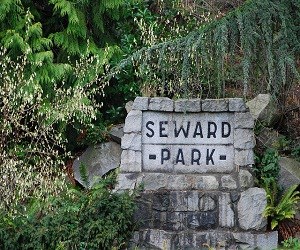SeattleChange

Seward Park, Seattle, WA Upcoming Event Dates & Tickets
About this Venue
Within the Seattle city limits, Seward Park boasts 300 acres of beautiful forest land, home to eagles' nests, old growth forest, a 2.4 mile bike and walking path, an amphitheater, a native plant garden, an art studio, miles of hiking trails, shoreline, beaches and more.
Seward Park is home to the Seward Park Environmental & Audubon Center, a partnership between National Audubon Society and Seattle Parks & Recreation. The Seward Park Center’s mission is to inspire exploration, discovery, and stewardship of the natural world through programs that promote healthy, sustainable communities.
History
In 1892 Seattle Park Superintendent E. O. Schwagerl proposed that the city buy Bailey Peninsula as part of its first Comprehensive Plan. Many argued that the peninsula was too far from town, but Schwagerl knew better. Luckily, his opinion was backed by the Olmsted Brothers as they developed a plan for Seattle’s parks in 1903. In 1911, the city bought the peninsula for $322,000 and named it after William H. Seward, the Secretary of State who was responsible for America’s purchase of Alaska in 1867.
Development of the park was slow at first. In 1917, the lowering of Lake Washington by construction of the Ship Canal exposed the wide grassy meadow that now leads to the swimming beach. The bathhouse was constructed in 1927. The fish rearing ponds were built in 1935 as part of an effort to make Lake Washington a "fisherman’s paradise." In 1953, a Greek-style amphitheater was hollowed out on the south hillside and for years was the scene of lavish orchestra, chorus, and dance productions under the direction of Gustave Stern.



